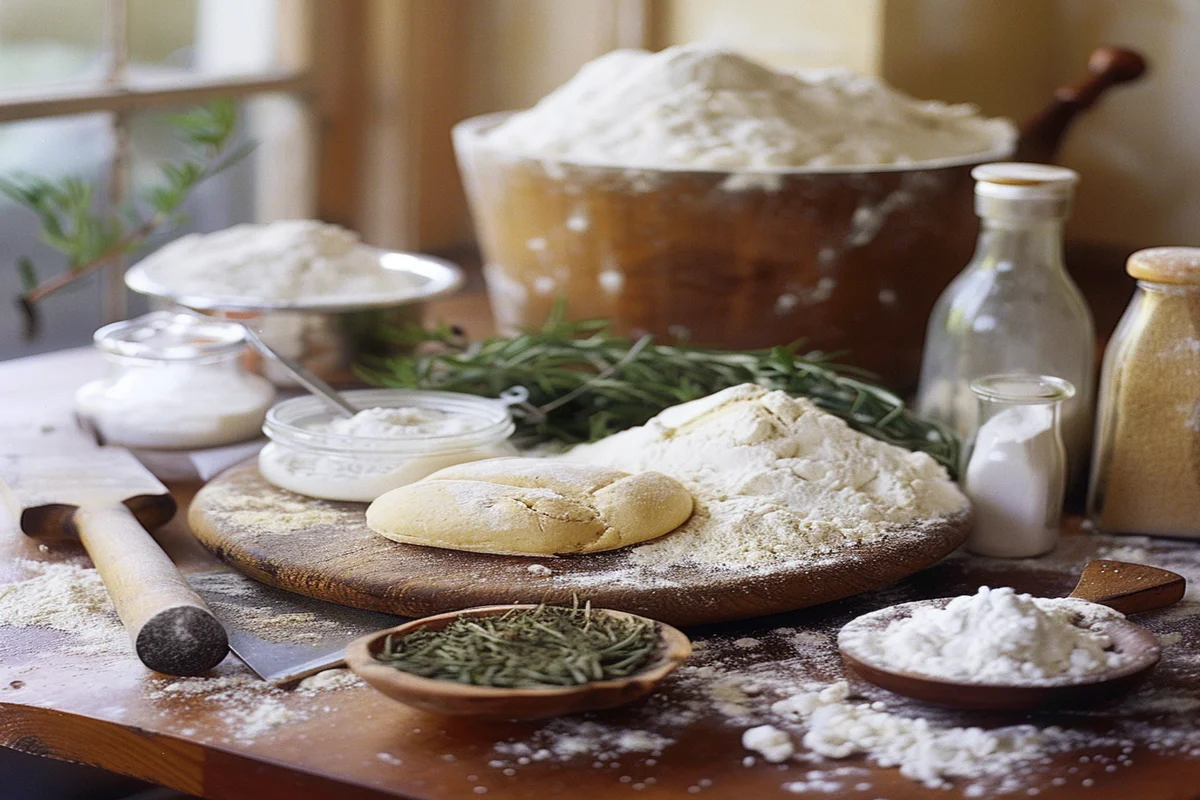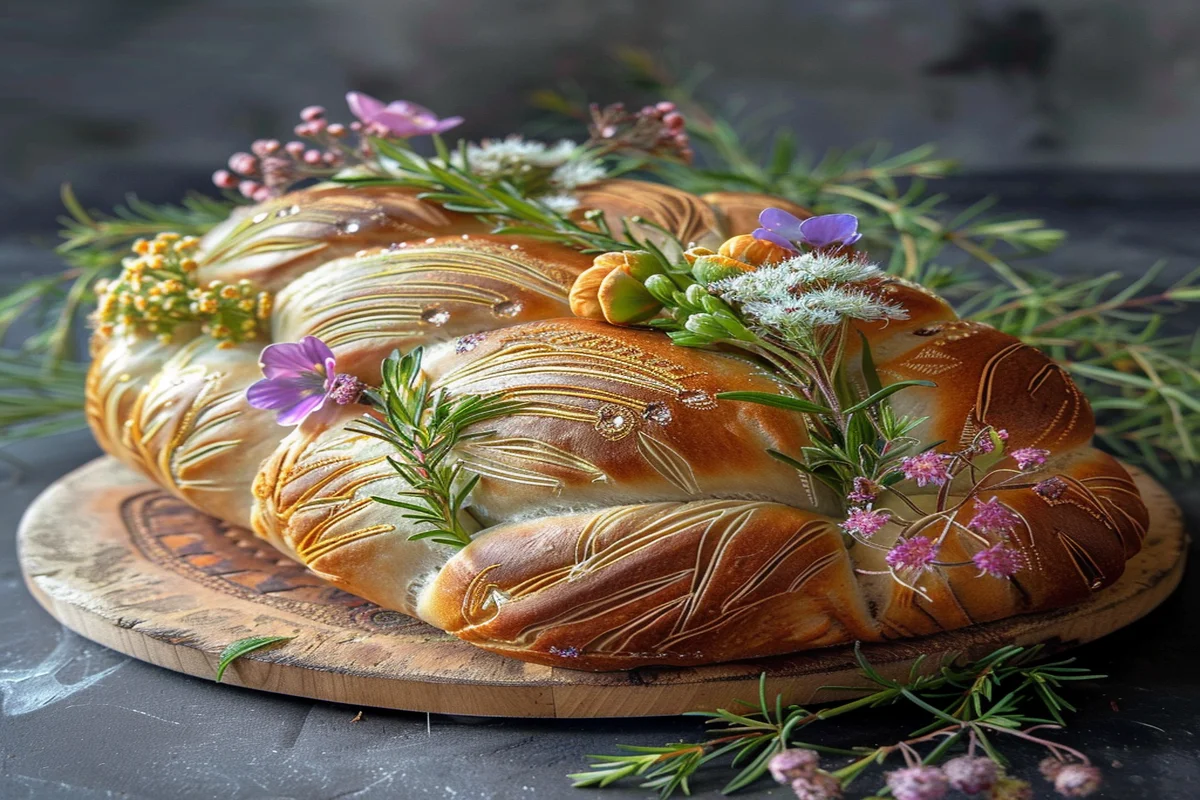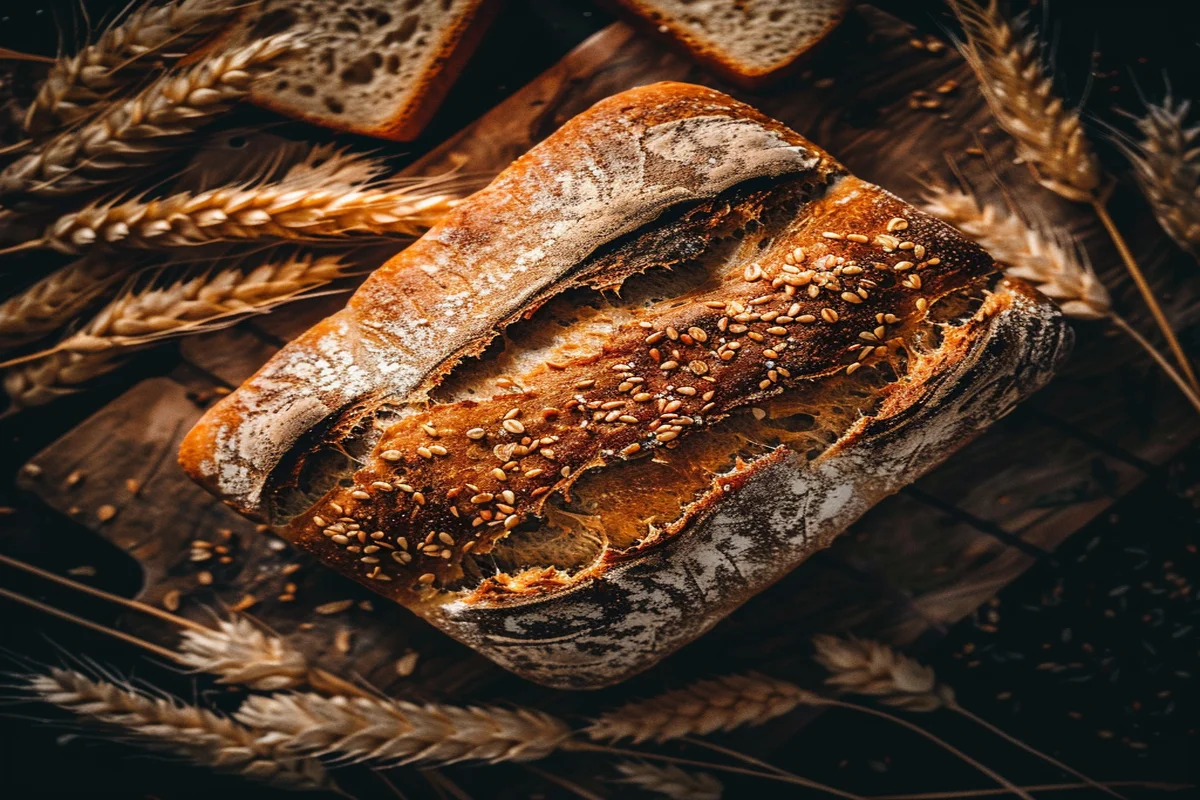Embarking on the journey of creating the perfect bread recipe for special events can elevate any celebration into a memorable affair. This guide is meticulously crafted for those eager to master the art of baking bread that not only tantalizes the taste buds but also stands as a centerpiece at gatherings. From selecting premium ingredients to mastering sophisticated baking techniques, we’ll navigate through every essential step to ensure your bread becomes the highlight of any special occasion.
The Art of Baking Bread for Celebrations
Crafting the Perfect Loaf for Memorable Occasions
In crafting the perfect bread recipe for special events, it’s not merely about adhering to a set of instructions. It’s about conjuring a sensory delight that elevates the occasion. Whether it’s for a wedding, a birthday, or a casual family gathering, the right bread can significantly enhance the experience.
But how does one craft the ideal loaf for such occasions? The journey begins with a deep understanding of the role of bread in various cultures and meticulously selecting the right ingredients for your event-specific bread recipe.
The Role of Bread in Various Cultures
Bread, in its myriad forms, serves as a cornerstone in cultures across the globe. From the crusty baguettes of France to the soft, fluffy naan of India, each culture boasts a unique bread that occupies a special place in its celebrations and ceremonies.
For example, in Italy, pane sciocco is a staple at weddings, symbolizing prosperity and good fortune. In Mexico, pan de muerto is a sweet bread crafted for Day of the Dead festivities. Grasping these cultural subtleties can infuse your event with an authentic and thoughtful touch.
Selecting the Right Ingredients for Your Event Bread Recipe
The foundation of any exceptional bread recipe for special events lies in the quality of its ingredients. Premium flour, fresh yeast, and pure water are essential. However, when baking for special events, incorporating unique elements that resonate with the theme of your occasion can elevate your bread from good to unforgettable.
For instance, adding warm spices like cinnamon and nutmeg can imbue your bread with a cozy, winter vibe. Conversely, for a summer gathering, incorporating citrus zest can offer a refreshing twist. The possibilities are boundless!
Ultimately, the secret to a triumphant bread recipe for special events is attention to detail. Dedicate time to experiment with various ingredients and, above all, savor the process.
Types of Bread for Different Events
Bread Varieties to Elevate Your Special Event
When it comes to special events, the type of bread you serve can be as important as the main dish. It’s not just a side item; it’s a statement piece that can complement the theme and leave a lasting impression on your guests. So, let’s explore some event-specific bread types that could be the talk of the table.
Traditional Breads for Weddings, Birthdays, and More
Each event has its own vibe, and the bread should match it. For a wedding, a delicate brioche can add a touch of elegance. Birthdays might call for something more fun and whimsical, like a colorful focaccia garden. And for more formal events, a classic sourdough can bring a rustic yet sophisticated feel.
But don’t just stop at the traditional. Why not mix things up? A fusion of flavors or a bread that tells a story can add an extra layer of interest to your event.
Gluten-Free and Vegan Options for Inclusive Celebrations
Nowadays, it’s essential to consider dietary restrictions when planning an event. Offering gluten-free and vegan bread options ensures that all your guests can enjoy the meal without hesitation.
Gluten-free bread can be made from a variety of flours, such as almond, rice, or buckwheat. Vegan bread, on the other hand, avoids all animal products, using substitutes like flaxseed or chia seeds for eggs. These options show your guests that you care about their preferences and well-being.
Preparing Your Kitchen for Bread Baking

Setting the Stage for Baking Success
Before the flour is dusted and the oven preheated, ensuring your kitchen is primed for the task at hand is essential. A well-prepared kitchen is the backbone of any successful baking endeavor, especially when it comes to bread for special events. Let’s get your space ready!
Essential Tools and Equipment
First things first, gather your tools. A sturdy mixer, if you’re not kneading by hand, a reliable oven, and accurate measuring instruments are non-negotiables. Don’t forget the baking stone or a dutch oven for that perfect crust, and a sharp knife or lame for scoring your dough.
But it’s not just about having the right tools; it’s also about knowing how to use them. Familiarize yourself with your equipment to avoid any hiccups when it’s game time.
Organizing Your Workspace Efficiently
An organized kitchen is a happy kitchen. Clear your counters to give yourself ample space to work. Have all your ingredients measured and ready to go—this is what chefs call mise en place, and it’s a game-changer.
Think about the flow of your workspace. You’ll want to move seamlessly from mixing to shaping to baking. Efficiency is key, especially when baking in bulk for events.
Step-by-Step Bread Recipe
The Ultimate Bread Recipe for Special Events
Now, we roll up our sleeves and dive into the heart of bread-making: the recipe. This step-by-step guide will walk you through creating a stunning loaf that’s not only delicious but also worthy of your special event. Let’s bake a bread that will be remembered long after the last crumb has been savored.
Ingredients and Measurements
For our special event celebration bread, you’ll need:
- 500g all-purpose flour
- 10g salt
- 7g instant yeast
- 300ml warm water
- 30ml olive oil
- Optional: herbs, spices, or other flavorings to suit your event
Measure out each ingredient with precision for the best results. Baking is a science, after all!
Detailed Baking Instructions
- In a large mixing bowl, whisk together the flour, salt, and instant yeast.
- Gradually add the warm water and olive oil, mixing until a dough begins to form.
- Turn the dough onto a floured surface and knead for about 10 minutes, until smooth and elastic.
- Place the dough in a greased bowl, cover with a damp cloth, and let it rise in a warm place for 1 hour, or until doubled in size.
- Once risen, punch down the dough and shape it to fit your chosen baking vessel.
- Preheat your oven to 220°C (430°F) with a baking stone or tray inside.
- Score the top of your dough with a sharp knife or lame, then carefully transfer it to the preheated stone or tray.
- Bake for 25-30 minutes, or until the bread is golden brown and sounds hollow when tapped on the bottom.
- Allow the bread to cool on a wire rack before slicing.
Decorating and Presenting Your Bread

Adding the Finishing Touches to Your Event Bread
Once your bread has cooled and you’re ready to showcase it, it’s time to think about presentation. The way you decorate and present your bread can transform it from a simple baked good to a centerpiece worthy of any special event. Let’s explore some creative techniques to make your bread stand out.
Creative Decorating Techniques
A little creativity goes a long way in bread decoration. Consider using stencils with powdered sugar or flour for a delicate design on top of your loaf. Edible flowers or herbs can also add a pop of color and a touch of elegance. For themed events, shaping your bread to match the theme can be a fun and impressive touch.
Presentation Ideas for Different Occasions
How you present your bread can be just as important as how it tastes. For a rustic, earthy vibe, consider a wooden cutting board and a linen cloth. For more formal events, a silver bread basket lined with a decorative napkin can elevate the experience. Remember, the goal is to complement the theme and atmosphere of your event.
Pairing Bread with Event Menus
Complementing Your Event’s Theme with the Right Bread
The bread you choose can be a harmonious addition to your event’s menu, enhancing flavors and adding depth to the dining experience. It’s not just about the bread itself, but how it interacts with the other dishes served. Let’s delve into the art of pairing bread with your event’s culinary lineup.
Pairing Bread with Wines and Cheeses
A well-considered bread pairing can elevate the taste of wines and cheeses. For instance, a nutty, whole-grain loaf can complement the richness of aged cheeses, while a light, airy ciabatta might be the perfect match for a crisp white wine. Consider the body and flavor profile of the wines and cheeses at your event when selecting your bread.
Bread as a Canvas for Flavorful Spreads
Bread also serves as a versatile canvas for spreads and toppings. A crusty baguette can be the perfect vehicle for a savory tapenade or a delicate bruschetta. For dessert spreads like chocolate ganache or fruit compotes, a sweet brioche can be delightful. Think about the flavors of your event’s menu and choose a bread that will complement them beautifully.
Advanced Baking Tips and Tricks
Elevating Your Bread Baking Skills
Baking bread for special events is an opportunity to showcase your culinary prowess. With a few advanced tips and tricks up your sleeve, you can elevate your bread from good to extraordinary. ‘s delve into some techniques that will help you master the art of celebratory bread baking.
Mastering Fermentation and Proofing
Understanding the fermentation process is key to developing flavor and texture in your bread. Controlling temperature and time during proofing can lead to a better crumb structure and more complex flavors. For example, a slow, cold fermentation in the refrigerator can enhance the taste and longevity of your bread, making it ideal for events.
Troubleshooting Common Baking Issues
Even the most experienced bakers encounter issues now and then. If your bread isn’t rising, check the freshness of your yeast. If the crust is too thick or too thin, adjust the steam in your oven. And if the flavor is lacking, consider a longer fermentation time or the addition of preferments like a poolish or biga.
By understanding and anticipating these common challenges, you can ensure that your bread is event-ready and delicious every time.
FAQ Section
Your Bread Baking Questions Answered
As we wrap up our comprehensive guide to baking bread for special events, it’s time to address some common questions that might arise during your baking journey. This FAQ section is inspired by the “People also ask” feature and aims to provide you with additional clarity and confidence as you prepare to bake your celebratory loaves.
How to Store Event Bread
Q: What’s the best way to store bread for an event to maintain its freshness?
A: Ideally, bread should be baked as close to the event time as possible. However, if you need to bake in advance, cool the bread completely before storing it in a bread box or wrapping it in a linen cloth and placing it inside a paper bag. This allows the bread to breathe and stay fresh for a day or two. For longer storage, slice and freeze the bread, then reheat it in the oven before serving.
Making Bread in Advance for Events
Q: Can I make my bread dough ahead of time?
A: Yes, you can prepare your dough ahead of time and refrigerate it during the first rise. This method, known as retarding the dough, can actually enhance the flavor. When you’re ready to bake, let the dough come to room temperature, shape it, and proceed with the second rise before baking.
Adapting Recipes for Large Quantities
Q: How do I scale up a bread recipe for a large event?
A: When scaling up a recipe, it’s important to maintain the ratios of ingredients. Use a kitchen scale for accuracy, and be aware that larger quantities of dough may require longer mixing and kneading times. Additionally, baking times may vary depending on the size of your loaves, so keep a close eye on your bread as it bakes.
Conclusion and Final Thoughts
The Joy of Baking Bread for Special Events
As we conclude our comprehensive guide, it’s evident that the art of crafting a bread recipe for special events transcends mere baking. It’s about weaving an unforgettable experience, a cherished memory that guests will hold dear long after the celebration concludes.
Delving into the cultural significance of bread, choosing premium ingredients, mastering the baking process, and presenting your masterpiece in a manner that enhances the theme of the event—each step underscores your commitment and passion for baking.
The essence of any exceptional bread recipe for special events lies within the baker. Your zeal, creativity, and meticulous attention to detail are what distinguish your bread. Embrace experimentation, welcome new techniques, and infuse your unique flair into your creations.
Ultimately, the delight of sharing your handcrafted bread with loved ones, witnessing their joy from the initial taste, underscores the value of your endeavors. So, don your apron, warm up your oven, and embark on the enchanting journey of baking bread for special events.

